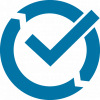Related Content
 |
Interface Grief: Is It Agile, or Just Bad Software Engineering? There are people who will use "being agile" to justify software engineering practices that could be perceived as lazy or even bad. The specifications are going to change, they say, so it would be a waste to engineer more to begin with than the minimum viable product. What's expediency and what's just poor practice? |
|
 |
Balancing Process and Tools The limits of a tool may lead us to realize that we are not working as effectively as we can, and often, changing a tool is part of the solution. But there are good and bad ways to select a tool and how you use it. In particular there are risks when you focus first on tools before considering the problem. |
|
 |
An Agile Approach to Change Management Many organizations are reluctant to introduce new tools or technologies, or even to update existing ones. The reason is often framed in terms of risk management, but agile teams already have the tools to manage the risk of change: testing and experiments. These approaches together eliminate gaps in risk identification. |
|
 |
Continuous Exploratory Testing: Expanding Critical Testing across the Delivery Cycle Continuous testing entails executing automated tests to obtain rapid feedback on business risks. Where does that leave exploratory testing? Obviously, it doesn’t make sense to repeat the same exploratory tests across and beyond a sprint, but exploratory testing can be a continuous part of each software delivery cycle. |
|
 |
Think through System Changes to Anticipate Quality Issues When you replace or significantly modify components of a larger system, too frequently we focus on whether the code we are building functions correctly. This is important, but it’s also short-sighted. It’s easy to introduce errors because we are changing interactions. Coding bugs are only one quality problem. |
|
 |
5 Tips for Choosing Your First Agile Project When transitioning to agile, applying agile methods to a single project is a great way to get started. However, care must be taken to ensure the project you choose is appropriate—it shouldn't be too large, take too long, or be too risky. Here are five tips to help you pick the right project for your agile pilot. |
|
 |
Driving Continuous Improvement to the Entire Organization In traditional agile approaches, retrospectives are valuable to team improvement. However, when teams encounter organizational issues beyond their control, such as project structure, interorganizational communication, or resources, it's more difficult. Here's how to expand continuous improvement to the whole company. |
|
 |
Using Feature Flags to Boost Testing and Deployment A feature flag is a configuration setting that lets you turn a given feature on or off. There is no need for a feature to be complete before you can start testing—as soon as the first piece of code is merged, you can turn the flag on in your test environment and begin. This also reduces risk. Do you use feature flags? |






